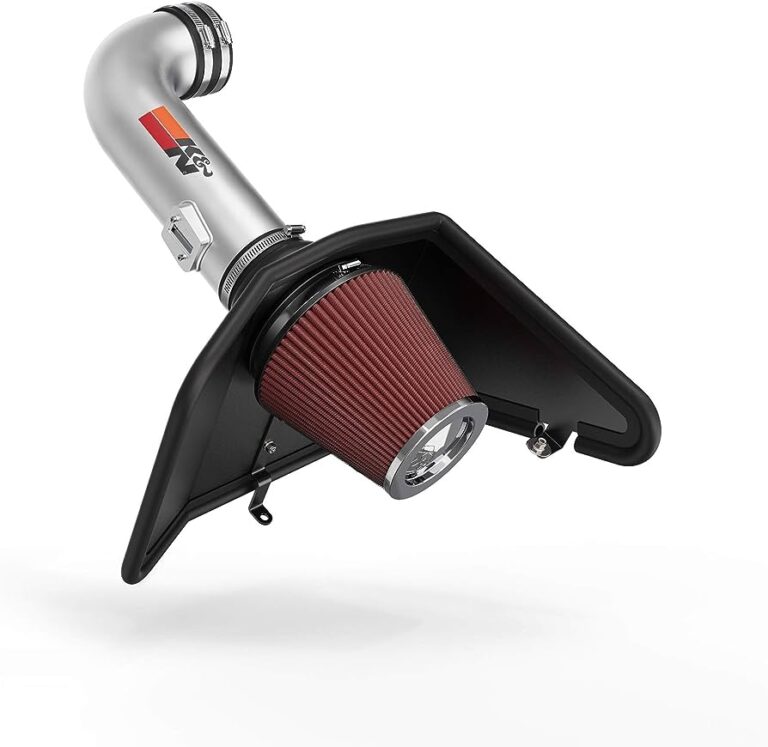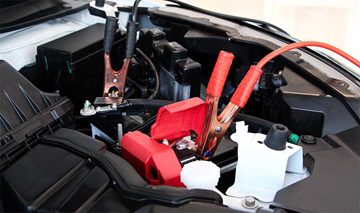How Do You Test a Catalytic Converter? Expert Tips and Techniques
To test a catalytic converter, you can do a visual inspection for physical damage or use a scanning tool to check for any error codes or emission readings indicating a malfunction.
Understanding The Importance Of Testing
Understanding the Importance of Testing
Testing a catalytic converter is an essential part of vehicle maintenance. It helps ensure that the converter is functioning properly, which is crucial for reducing harmful emissions and maintaining optimum performance. Regular testing allows you to detect any potential issues early on and take necessary actions to address them.
Why is testing a catalytic converter necessary?
Testing a catalytic converter is necessary for several reasons. Firstly, it helps to determine whether the converter is working efficiently in reducing harmful emissions. It also helps to identify any faults or malfunctions that may be affecting the converter’s performance.
Significance of regularly testing the catalytic converter
Regular testing of the catalytic converter is significant as it allows you to detect any deterioration or damage over time. This is crucial because a faulty converter can lead to increased emissions, reduced fuel efficiency, and potential damage to other engine components. By testing the converter regularly, you can address any issues promptly, ensuring optimal performance and minimizing the risk of further damage.
What are the risks of driving with a faulty catalytic converter?
Driving with a faulty catalytic converter can have several risks. Firstly, it can lead to increased emissions, which can contribute to pollution and harm the environment. Secondly, a faulty converter can cause reduced fuel efficiency, resulting in higher fuel consumption and increased costs. Additionally, a malfunctioning converter may also trigger the vehicle’s check engine light, indicating potential issues that need immediate attention. Ignoring a faulty converter can potentially damage other engine components, leading to costly repairs in the long run.
Preparing For The Testing Procedure
To test a catalytic converter, it is important to prepare for the testing procedure properly. First, gather the necessary tools and equipment that you will need. This may include a scan tool, exhaust backpressure gauge, oxygen sensor testing equipment, and a digital multimeter.
Next, ensure the safety measures are in place before starting the test. Make sure the vehicle is parked in a well-ventilated area and the engine is turned off. Wear protective gloves and safety goggles to prevent any accidents or injuries.
Lastly, prepare the vehicle for testing. Check for any visible damages on the catalytic converter such as dents or cracks. Ensure that the engine is cold and the exhaust system is not blocked. It is also important to disconnect the oxygen sensor connector before conducting the test.
Visual Inspection And External Checks
Visual inspection and external checks are important steps in testing a catalytic converter. By identifying physical signs of damage or deterioration, you can determine if the converter needs to be replaced. Start by examining the converter for external leaks or blockages, as these can affect its performance. Look for signs of corrosion, rust, or cracks on the converter body. Additionally, inspect the heat shields and mounting brackets to ensure they are secure and intact. Any loose or damaged components should be repaired or replaced. Regularly conducting visual inspections can help maintain the efficiency and functionality of your catalytic converter.
Using Obd-ii Diagnostic Scanners
When it comes to testing a catalytic converter, OBD-II diagnostic scanners can be a valuable tool. These scanners are capable of providing valuable data and information to help identify issues with the catalytic converter system. By exploring the capabilities of OBD-II diagnostic scanners, you can effectively test a catalytic converter.
Step-by-step guide to using the scanner for catalytic converter testing
- Start by connecting the OBD-II scanner to the vehicle’s data link connector (DLC).
- Once connected, turn the ignition on without starting the engine.
- Navigate through the scanner’s menu options to locate the “Read Codes” feature.
- Select the “Read Codes” option and wait for the scanner to retrieve diagnostic trouble codes (DTCs).
- Interpret the DTCs using the scanner’s built-in code definitions or consult a reliable code reference guide.
- Take note of any detected codes related to the catalytic converter system.
By following this step-by-step guide, you can effectively use an OBD-II diagnostic scanner to test a catalytic converter. Analyzing and interpreting the diagnostic trouble codes will provide valuable insights into the health and functionality of the catalytic converter.
Exhaust Gas Analysis
Exhaust Gas Analysis:
Understanding the science behind exhaust gas analysis is crucial for testing a catalytic converter. This process involves various methods:
- Non-dispersive infrared (NDIR) analyzer: This method measures the concentration of gas components based on their ability to absorb infrared light.
- Fuel analysis: Analyzing the fuel composition can help identify potential catalyst contaminants.
- Exhaust gas temperature measurement: Monitoring the temperature can indicate the converter’s efficiency and performance.
- Oxygen sensor: It provides valuable information about fuel mixture and combustion efficiency.
- Pressure drop test: This method measures backpressure to determine if the catalytic converter is clogged or restricted.
Interpreting the results of the exhaust gas analysis plays a vital role in determining a catalytic converter’s performance. Analyzing the concentration of certain gases, such as carbon monoxide, hydrocarbons, and oxygen, can offer insights into the converter’s efficiency and emissions-reducing capabilities. It is essential to compare the results with manufacturer specifications to assess if the catalytic converter is functioning optimally.

Credit: m.youtube.com
Temperature Testing
| Temperature Testing |
| Temperature testing is a crucial step to determine the health and efficiency of a catalytic converter. Measuring catalytic converter temperature helps identify any potential issues that may affect its performance. Utilizing infrared temperature guns, technicians can accurately measure the temperature at various points of the catalytic converter. This allows them to identify any abnormal temperature readings that may indicate a problem. Interpreting these temperature readings is essential for diagnosing potential issues. Higher temperatures within the catalytic converter can indicate a clog or a malfunctioning catalytic converter. On the other hand, lower temperatures may suggest a problem with fuel mixture or ignition timing. By paying close attention to temperature readings, technicians can pinpoint the source of the problem and recommend the necessary repairs. In summary, temperature testing plays a vital role in assessing the functionality of a catalytic converter. By using infrared temperature guns and interpreting the readings, technicians can diagnose potential issues and provide accurate solutions to ensure the proper functioning of the catalytic converter. |
Backpressure Testing
Performing a backpressure test is a crucial step in testing a catalytic converter for potential issues.
Start by connecting a pressure gauge to the oxygen sensor port on the exhaust system. Then, attach a vacuum gauge to the intake manifold to monitor engine RPM.
With the engine running at idle, observe the pressure reading on the gauge. A normal reading for backpressure is typically under 1.5 psi. If the reading exceeds this threshold, it indicates a possible obstruction or failure in the catalytic converter.
If the backpressure is found to be high, further investigation is required to determine the cause. This may involve inspecting the exhaust system for any clogs or restrictions, as well as analyzing the performance of the engine and other related components.
Interpreting the results of the backpressure test is crucial in diagnosing potential problems with the catalytic converter. High backpressure can lead to decreased engine performance, increased fuel consumption, and potential damage to the catalytic converter over time.
Regularly testing and maintaining the catalytic converter is essential for ensuring optimal vehicle performance and reducing harmful emissions.
Other Testing Methods And Considerations
Testing a catalytic converter is an essential step in determining its efficiency and overall functionality. In addition to the commonly used exhaust gas analysis method, there are alternative testing methods available. These methods include visual inspection and pressure testing. Visual inspection involves a thorough examination of the catalytic converter for physical damage, such as cracks or leaks, which may affect its performance. Pressure testing, on the other hand, checks for blockages and restrictions in the exhaust system.
When deciding which method to use, several factors should be considered. These factors include the availability of resources, time constraints, and the specific requirements of the testing procedure. Professionals, such as automotive technicians, play a crucial role in testing catalytic converters. They have the necessary expertise to accurately diagnose and evaluate the performance of these emission control devices.
Exploring alternative methods for testing catalytic converters provides a comprehensive approach to ensure their proper functioning. By considering all factors and involving skilled professionals, it becomes possible to conduct efficient and reliable tests, leading to effective diagnoses and appropriate solutions.
Maintaining And Replacing Catalytic Converters
Regular maintenance and prompt replacement of your catalytic converter are crucial for the proper functioning of your vehicle. To extend the lifespan of your catalytic converter, follow these tips:
- Ensure your engine is in good condition, as a malfunctioning engine can cause damage to the converter.
- Use only high-quality fuel to minimize the formation of harmful exhaust substances.
- Inspect your converter regularly for any physical damage, such as cracks or leaks.
- Avoid driving through deep water or driving on rough terrain, as it can damage the converter.
- Install heat shields to protect the converter from excessive heat.
- Be cautious with car modifications, as some aftermarket parts can negatively impact the converter.
Indications that your catalytic converter may need replacement include:
- Decreased fuel efficiency
- Unusual smells such as rotten eggs
- Engine misfires or hesitation
- Increased exhaust emissions
When it comes to disposing of your old catalytic converter, it is essential to follow proper recycling and disposal methods. Many auto parts stores and recycling centers accept old converters for recycling. Proper disposal ensures that hazardous materials inside the converter do not harm the environment.
Frequently Asked Questions Of How Do You Test A Catalytic Converter
How Do You Check If Your Catalytic Converter Is Bad?
To check if your catalytic converter is bad, listen for rattling noises, a noticeable decrease in engine performance or acceleration, and a strong sulfur smell. You can also conduct a visual inspection to see if there are any physical damages or blockages.
It’s always best to consult a professional for a thorough diagnosis.
How To Check For A Bad Catalytic Converter With A Scan Tool?
To check for a bad catalytic converter with a scan tool: 1. Plug the scan tool into the OBD-II port of your car. 2. Access the diagnostic menu on the scan tool. 3. Look for any codes related to the catalytic converter.
4. If you find codes like P0420 or P0430, it indicates a potential issue. 5. Consult with a professional mechanic to accurately diagnose and fix the problem.
What Are The 3 Most Leading Failures Of A Catalytic Converter?
The three major failures of a catalytic converter include: clogging due to accumulation of exhaust deposits, overheating caused by engine misfires, and physical damage resulting from impact or corrosion.
How Do You Unclog A Catalytic Converter Without Removing It?
To unclog a catalytic converter without removing it, use fuel additives designed to clean the converter and dissolve the blockages. Pour the additive into your gas tank and drive for a while, allowing the cleaner to break down the clog.
Regularly using a high-quality fuel system cleaner can also prevent future clogging.
Conclusion
Testing a catalytic converter is essential to ensure the efficient performance of your vehicle and compliance with emission standards. By following the steps outlined in this blog post, you can diagnose potential issues such as clogged or damaged converters. Regular testing and maintenance will not only prolong the lifespan of your catalytic converter but also contribute to a cleaner and greener environment.
Stay informed and proactive when it comes to your vehicle’s emissions system for a smoother and more eco-friendly driving experience.







